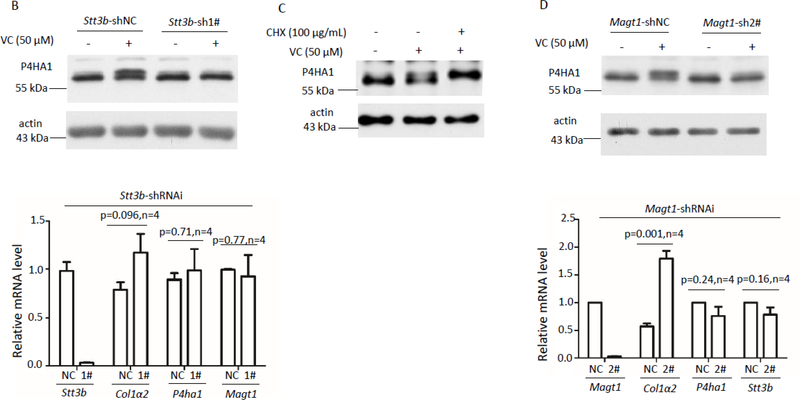Figure 4.
Silencing Stt3b or Magt1 reduced VC stimulated N259 glycosylation on P4HA1. (A) Downregulation of Stt3a (white bars of top panel) did not reduce N113 glycosylation (middle panel) or the mRNA levels of Stt3b (black bars of top panel). NC: Stt3a-shRNAi-negative control; 1#: Stt3a-shRNAi-1#; 2#: Stt3a-shRNAi-2#. Immunoblotting showed that in the absence or presence of VC, downregulation of Stt3a did not affect N113 glycosylation or N259 glycosylation of P4HA1 or P4HA1 protein levels (n=6). Silencing of Stt3b (B) or Magt1 (D) decreased N259 glycosylation on P4HA1 induced by VC without affecting P4HA1 protein levels (left panel). qPCR confirmed efficient downregulation of Stt3b (B) or Magt1 (D). Silencing Stt3b did not affect the mRNA levels of P4ha1, Col1a2, and Magt1 (B). NC: Stt3b-shRNAi-negative control; 1#: Stt3b-shRNAi-1# (n=4). However, silencing Magt1 enhanced Col1a2 but not P4ha1 and Stt3b mRNA levels (D). NC: Magt1-shRNAi-negative control; 2#: Magt1-shRNAi-2# (n=4). (C) Incubation of cells with VC plus CHX at the same time for 6 hrs enhanced N259 glycosylation on P4HA1.

